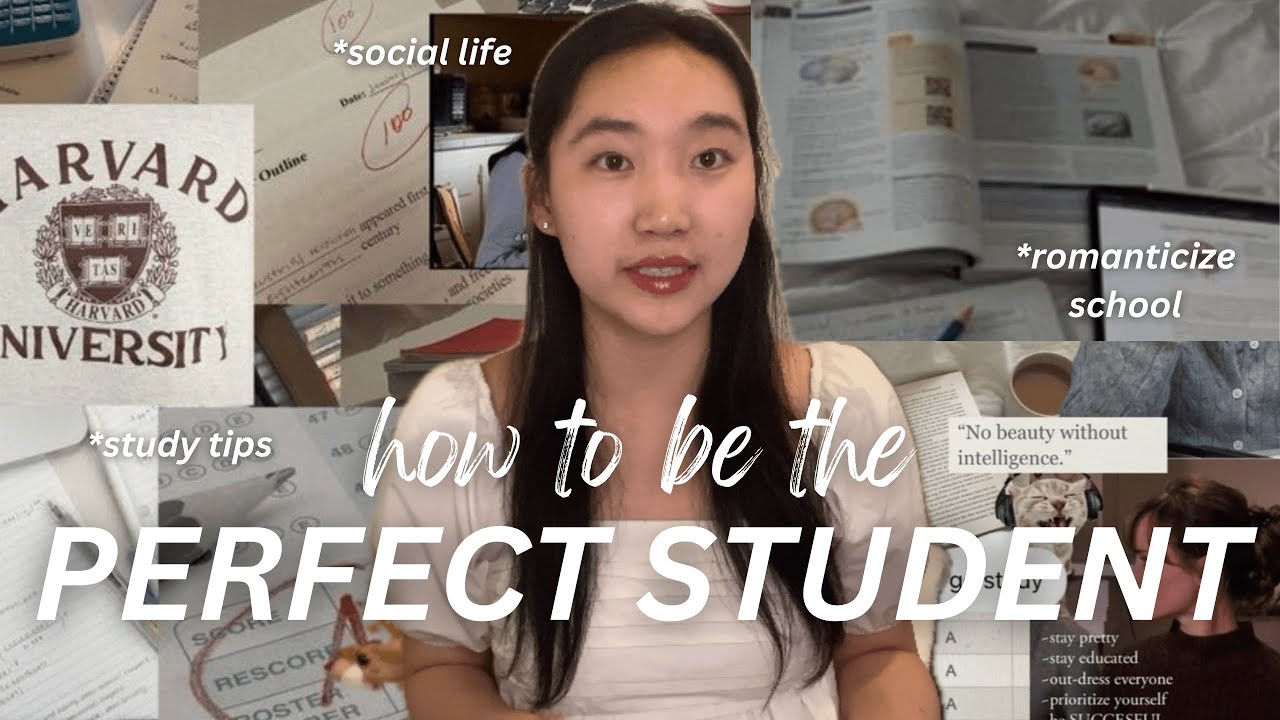How to OUT-STUDY EVERYONE with LITTLE EFFORT
Summary
TLDRThis video offers practical study strategies based on the speaker’s personal experience of transforming from struggling in high school to achieving A's and B's with minimal studying. Key tips include staying focused during class, taking notes in a way that makes sense to you, understanding concepts instead of memorizing, reviewing daily for short periods, and utilizing the Feynman technique. By actively engaging with the material and using effective study methods, students can significantly improve their academic performance without cramming or stress.
Takeaways
- 😀 Focus during class can significantly reduce your studying time later.
- 😀 Take notes in a way that makes sense to you, not just to match what the teacher says.
- 😀 Don’t memorize information word-for-word. Instead, understand and simplify the core concepts.
- 😀 Review material daily in small amounts to enhance long-term retention.
- 😀 Active learning techniques are more effective than passive learning methods.
- 😀 The 'Feynman Technique' is a powerful study method: study, teach, and fill in gaps.
- 😀 Reviewing and teaching someone else helps you identify gaps in your knowledge.
- 😀 Repetition is key for reinforcing what you’ve learned and improving retention.
- 😀 The more you review material, the more likely your brain will retain it long-term.
- 😀 Break down complex topics into simpler, more understandable concepts for easier retention.
Q & A
What was the significant change that occurred when the speaker transitioned to high school?
-The speaker went from a small school with 150 students to a larger high school with several hundred students. This change caused a drop in their academic performance, shifting from straight A's to D's and F's.
What strategy did the speaker use to improve their grades?
-The speaker focused on studying more effectively by cutting down on unnecessary study time. They learned to concentrate more in class, take better notes, and apply strategies like reviewing materials regularly.
How did focusing during class lectures help the speaker?
-By concentrating during lectures, the speaker was able to cut their study time in half. This helped them grasp the material better, reducing the need for excessive after-class studying.
What is the recommended way of taking notes according to the speaker?
-The speaker advises writing notes in a manner that makes sense to the student personally, not necessarily how the teacher presents them. This helps to understand the topic better by focusing on the key points rather than unnecessary details.
What is the suggested approach to studying the material?
-Instead of memorizing the entire topic word for word, the speaker recommends reading sections of the text and interpreting them in your own words, focusing on understanding the core concepts.
How does the speaker recommend handling the stress of multiple exams in a short time?
-Rather than cramming all the material at once, the speaker suggests reviewing the material daily in small chunks. This helps your brain retain important information over time, avoiding last-minute overload.
What is the role of repetition in studying, according to the speaker?
-Repetition plays a crucial role in helping the brain determine what is important to remember. The speaker suggests reviewing material consistently to reinforce its importance and ensure better retention.
What does the speaker say about the effectiveness of passive learning techniques?
-The speaker notes that passive learning methods, such as just listening without active engagement, are less effective compared to active learning techniques where you engage with the material through practice and application.
What is the most effective learning technique, according to the speaker, and who developed it?
-The most effective technique discussed is the 'Feynman Technique,' developed by Richard Feynman. This technique involves reviewing material, teaching it to someone else, and filling in gaps by revisiting the material.
How can the Feynman Technique help improve understanding and retention of study material?
-By teaching the material to someone else or explaining it aloud to oneself, the learner actively reinforces their understanding. If gaps are found, the material is revisited and clarified, ensuring better comprehension and retention.
Outlines

This section is available to paid users only. Please upgrade to access this part.
Upgrade NowMindmap

This section is available to paid users only. Please upgrade to access this part.
Upgrade NowKeywords

This section is available to paid users only. Please upgrade to access this part.
Upgrade NowHighlights

This section is available to paid users only. Please upgrade to access this part.
Upgrade NowTranscripts

This section is available to paid users only. Please upgrade to access this part.
Upgrade NowBrowse More Related Video

The SECRET to Straight A's NO MATTER WHAT

getting straight A's is easy, actually

Learn How To Actually Study Before It’s Too Late

HOW TO BE THE PERFECT STUDENT | study tips, organization methods, social life, romanticize school

Stop Memorizing: How I Became Fluent in English from Zero

Exam Cramming Tips I would've K*LLED for (how I ALWAYS get A's)
5.0 / 5 (0 votes)